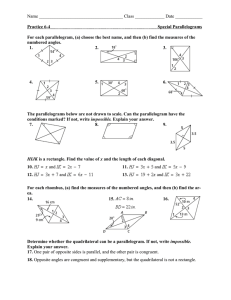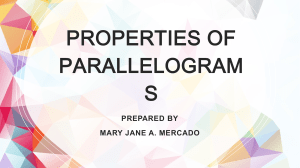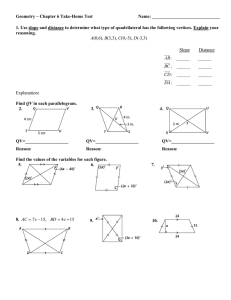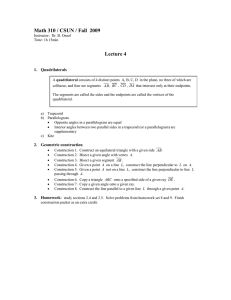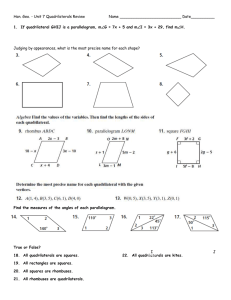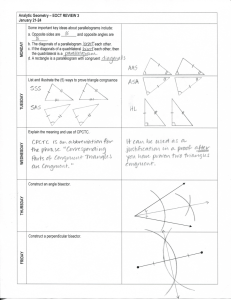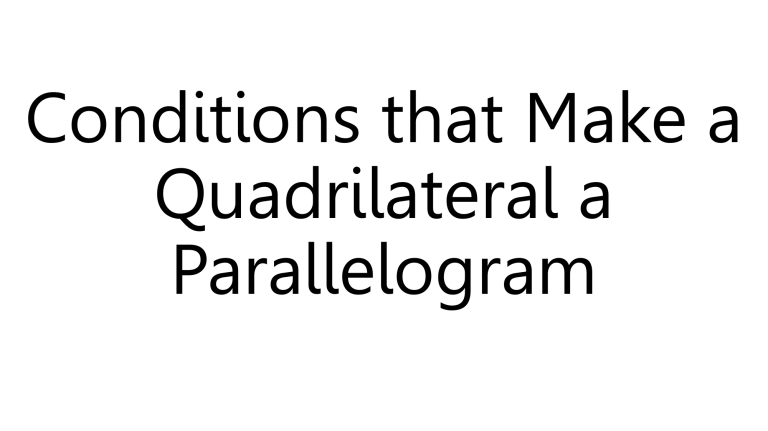
Conditions that Make a Quadrilateral a Parallelogram Direction: Analyze the diagram below. What do you remember about the family of quadrilaterals? Can you define and illustrate the different kinds of quadrilaterals? QUADRILATERAL TRAPEZOID PARALLELOGRAM KITE ISOSCELES TRAPEZOID RECTANGLE RHOMBUS SQUARE QUADRILATERALS THAT ARE PARALLELOGRAMS • A quadrilateral is a four-sided polygon. It has 4 vertices and the sum of the interior angles is 360 degrees. There are conditions that should be determined to prove that quadrilaterals are parallelograms. These are the following: 1. In a parallelogram, any two opposite sides are congruent. 2. In a parallelogram, any two angles are congruent. 3. In a parallelogram, any two consecutive angles are supplementary. There are conditions that should be determined to prove that quadrilaterals are parallelograms. These are the following: 4. The diagonals of a parallelogram bisect each other. 5. The diagonals of a parallelogram in two congruent triangles. Practice! Direction: Write TRUE if the statement is correct; otherwise, write FALSE. 1. A quadrilateral is a parallelogram if both pairs of opposite sides are congruent. TRUE 2. A quadrilateral is a parallelogram if both pairs of opposite sides are supplementary. FALSE 3. A quadrilateral is a parallelogram if any two consecutive angles are complementary. FALSE 4. A quadrilateral is a parallelogram if the diagonals bisect each other. TRUE 5. A quadrilateral is a parallelogram if the diagonals form two congruent triangles. TRUE Keep Practicing! Direction: Refer to the given figure at the right and answer the following. EY ∠Y 𝟏𝟖𝟎° AX △EAY Seatwork 1 Direction: Refer to the given figure at the right and answer the following. ASSIGNMENT:
